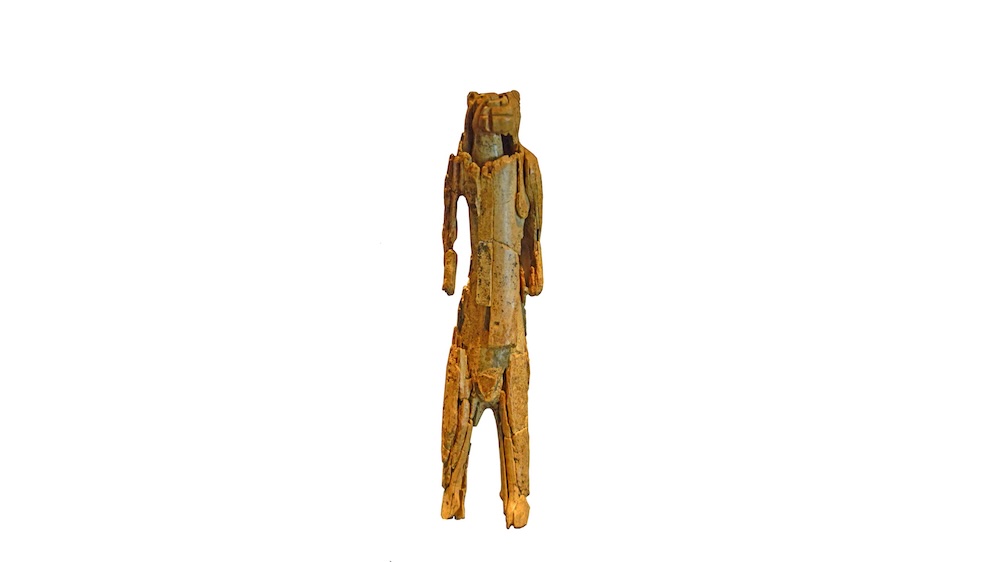
Name: Lion Man
What it is: An ivory statuette depicting a half-human, half-lion
Where it was found: Inside the dark chamber of a cave in Germany in 1939.
When it was made: 40,000 years ago
What it tells us about the past: Carved out of a mammoth tusk, the 12-inch-tall (31 centimeters) artifact would have been difficult to make. In fact, when researchers conducted an experiment years later using ice age tools, including pieces of flint, they determined it would have taken the artisan approximately 400 hours to complete, according to the British Museum.
Since this would have been a lot of time dedicated to creating a single piece — especially living in the harsh conditions caused by the ice age — researchers think that the carving was likely used for ceremonial purposes. That conclusion is buttressed by wear patterns found on the body, which show that the item was passed around from person to person. Therefore, the artifact is considered the oldest known evidence of religious belief in the world.
For years, Lion Man was considered the oldest depiction of a therianthrope, or a part-human, part-animal figure. Therianthrope are "evidence for the ability to imagine the existence of a supernatural being, something that does not exist in real life," Adam Brumm, an archaeologist at Griffith University in Australia, previously told Live Science. But now, newly dated rock art in a cave in Indonesia shows an even older therianthrope, showing that humans conceived of human-animal mashups around 51,200 years old.
The cave where the Lion Man statuette was found was also littered with perforated arctic fox teeth and reindeer antlers, suggesting that the cave was used as a place to conduct rituals.







